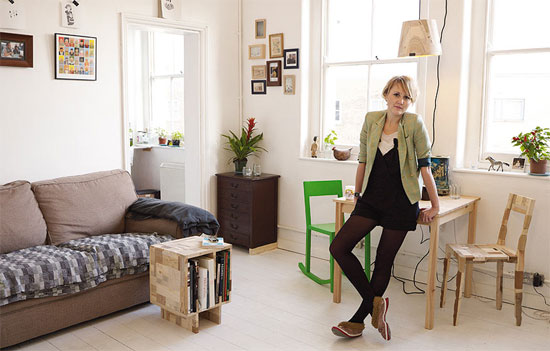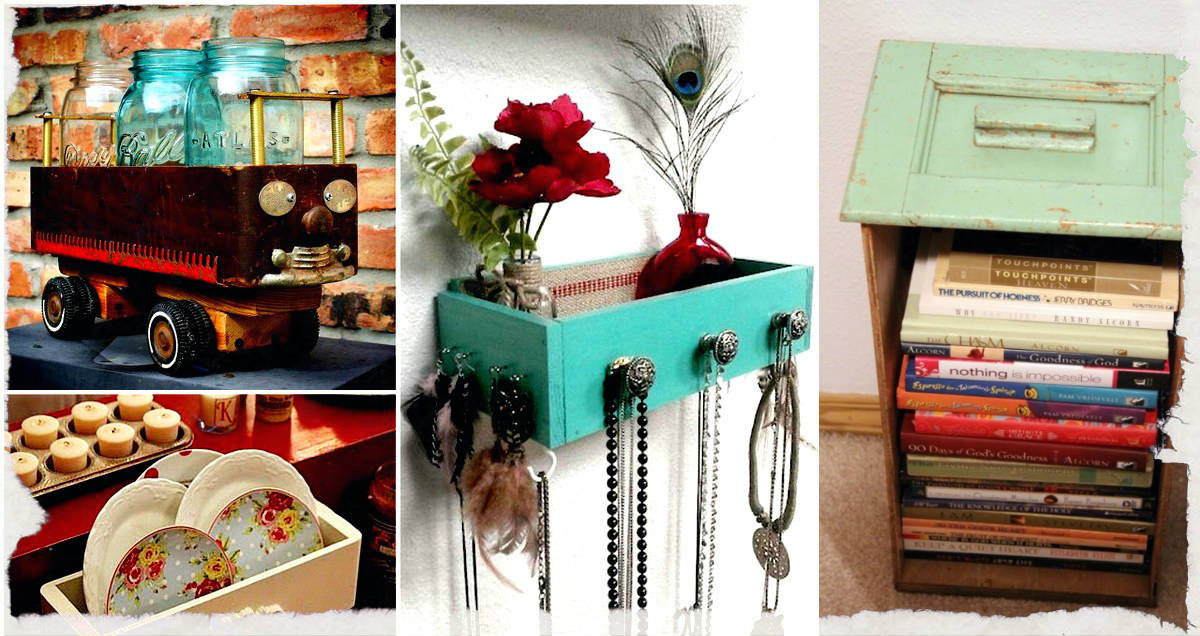Anúncios
Any creative or renovation project, whether at home or in a carpentry shop, inevitably generates leftover wood. Unfortunately, these leftovers often end up being discarded, even though they are materials that can still be used in many ways.
However, some people see this waste as an opportunity to create something new and valuable. Norwegian designer Amy Hunting is an example of how wood can be reused with creativity and good taste to transform what would otherwise be waste into unique and award-winning pieces.

Amy Hunting's Sustainable Design
Amy Hunting gained notoriety by combining ropes, reclaimed wood and a dose of creativity to create a shelving unit with a simple yet highly aesthetic and functional design. This piece of furniture, which was featured at the Stockholm Furniture Fair and Green Furniture Sweden, is an example of how recycling wood can result in high-quality pieces that are recognized in the design world. The success of her creations shows that, with a careful eye and an open mind, leftover wood can be transformed into products that not only avoid waste, but also bring beauty and functionality to any space.
Inspiration for Creating with Leftovers
The photos of Amy Hunting’s creations serve as excellent inspiration for anyone wanting to try similar projects at home. The great benefit of using scrap wood is that, in addition to being a sustainable material, they are often very cheap or even free. This way, you can try out different ideas without spending a lot, while also contributing to recycling and reusing resources.
In addition to shelves, there are several other pieces that can be made with leftover wood. Toys, for example, are a fun and educational option, allowing you to create unique and personalized items for children. Other possibilities include mini dressers, stools and chairs. Under the signature of a designer, some of these creations reach high prices, but there is nothing stopping you from creating your own versions, adapted to your style and needs.
Tips for Working
If you’re excited about the idea of creating your own furniture or decorative items from scrap wood, there are a few important considerations to keep in mind. First, it’s essential to check that the wood you intend to use is not contaminated with solvents, fuels, or paints. Using contaminated wood can be harmful to your health, especially indoors. Therefore, if the wood shows signs of contamination, it’s best to avoid using it or have it properly treated before starting the project.
Another point to consider is the preparation of the wood. Depending on the type of scrap wood you have, you may need to sand, cut, or even join different pieces together to create the piece you want. Although it is a process that requires time and patience, the end result can be extremely rewarding, both for the quality of the product and the satisfaction of having reused a material that could have been discarded.
Playing with Creativity: Exclusive Projects
One of the biggest draws of working with reclaimed wood is the creative freedom it offers. Since each piece of wood is unique in terms of color, texture, and size, each piece you create will also be unique. This exclusivity is especially valuable in interior design projects, where the goal is often to create spaces that reflect the personality and tastes of those who inhabit them.
If you’re new to this type of craft, start with simple projects, like a small stool made from scrap wood or a small bookshelf. As you gain confidence and skill, you can try more complex projects, like tables, chairs, or even larger pieces of furniture like bookshelves or cabinets. Don’t be afraid to experiment and play around with different combinations of wood and other materials, like rope, metal, or glass, to create pieces that are truly yours.
Economy and Sustainability: Benefits of Recycling
Recycling wood is not only a sustainable practice; it’s also a way to save money. Instead of buying new materials or ready-made furniture, you can use what you already have at home or buy scrap wood at very low prices. This not only reduces the cost of your projects, but also reduces the demand for new wood, helping to preserve forests and natural resources.
Furthermore, the act of recycling wood can be a relaxing and therapeutic activity. The process of planning, cutting, assembling and finishing a piece of wood is an opportunity to disconnect from the fast-paced routine of everyday life and dedicate yourself to something creative and manual. Many people find woodworking to be a hobby that provides pleasure and satisfaction, as well as tangible results that can be enjoyed for years.
Turning Ideas into Reality
The example of Amy Hunting and other designers who work with recycled wood shows that there is no limit to what can be done with this material. From small decorative objects to large and complex furniture, leftover wood offers endless creative possibilities. And the best part is that you don’t have to be an expert to get started. With a little patience, creativity and a willingness to learn, anyone can transform discarded material into something new and beautiful.
So the next time you find yourself with leftover wood, think twice before throwing it away. These pieces could be the start of a new creative project that not only beautifies your home, but also contributes to recycling and the responsible use of resources. Over time, you may discover that working with recycled wood is more than just a hobby—it’s a form of artistic expression and a way to make a difference in the world.
Learn how to make other arts by recycling, Click here.
Check out interesting facts about recycling clicking here.




